#Pleuronectiformes
Explore tagged Tumblr posts
Text
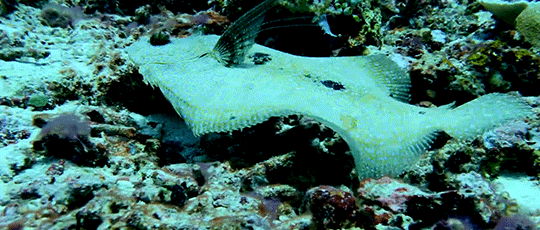
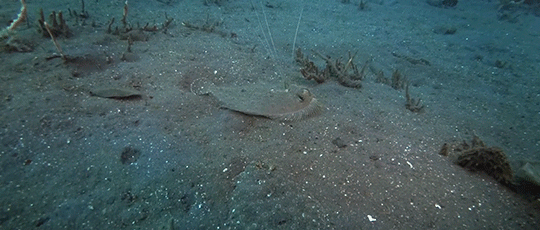
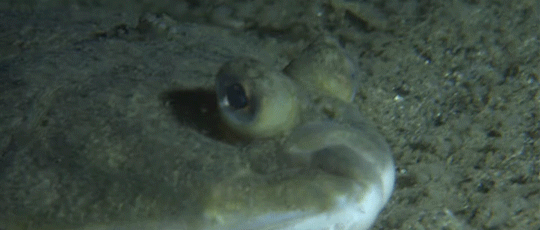

Flounders are demersal fish, meaning they live and feed on or near the bottom of bodies of water. Their distinctive shape is an obvious benefit for this lifestyle. ©Nature Footage
74 notes
·
View notes
Text
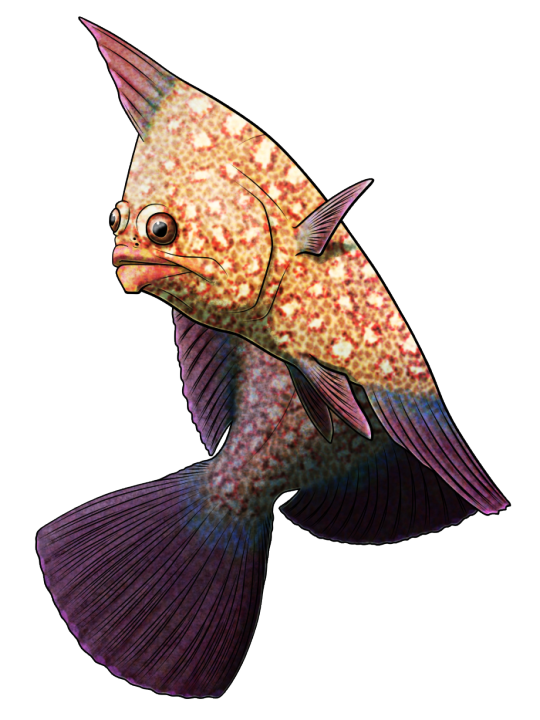
Strange Symmetries #18: Flat Fish Friday
Modern flatfish are characterized by their highly asymmetrical skulls, with both eyes positioned on just one side of their head. They aren't actually born this way, but instead they undergo "eye migration" as juveniles, twisting up their skulls to bring one eye across the top of the head.

Progressive eye migration in a developing Summer Flounder, Paralicthys dentatus. From Helfman et al (2009). The diversity of fishes. 2nd ed., Wiley-Blackwell.
This bizarre arrangement is the result of flatfish adapting to life laying flat on the seafloor, but instead of slowly widening and flattening themselves out they took an evolutionary "shortcut" by simply tipping their tall narrow bodies over onto one side. Initially this would have left one of their eyes unusable, but random mutations causing slightly asymmetrical skulls would have rapidly become highly advantageous to the earliest members of this lineage – and over time they just got wonkier and wonkier.
We've even found fossils of early flatfish in the "halfway there" stage of their evolution!
Amphistium paradoxum lived in what is now northern Italy during the Eocene, around 50-48 million years ago. About 20cm long (~8"), it had one eye partially migrated towards the top of its head, but not all the way around yet, showing a transitional state between its bilaterally symmetric ancestors and its more twisted-skulled modern relatives.
Unlike most modern flatfish Amphistium came in both "right-eyed" and "left-eyed" forms in equal numbers, suggesting that a genetic preference for a specific side also hadn't developed yet.
———
NixIllustration.com | Tumblr | Twitter | Patreon
#science illustration#strange symmetries#paleontology#paleoart#palaeoblr#amphistium#pleuronectiformes#flatfish#actinopterygii#fish#art#flat fuck friday
343 notes
·
View notes
Text
Taxonomy Tournament: Fish

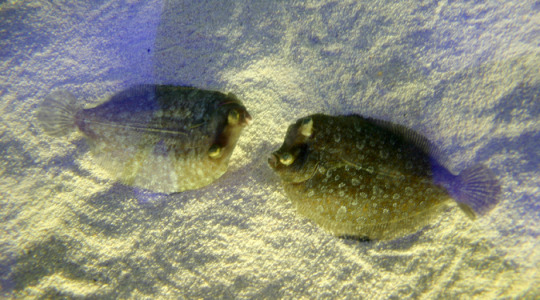
Carangiformes. This order contains the aggressively predatory dolphinfishes, and remoras, which have a sucker-like dorsal fin that allows them to attach to a larger host animal.
Pleuronectiformes. This order is made up of flatfishes, wuch as the flounder and halibut.
#animals#biology#polls#poll tournament#zoology#remoras#fish#flounders#halibut#Carangiformes#Pleuronectiformes#0x7cv0x83#animal tournament#Animal Tournament Round 1
29 notes
·
View notes
Text
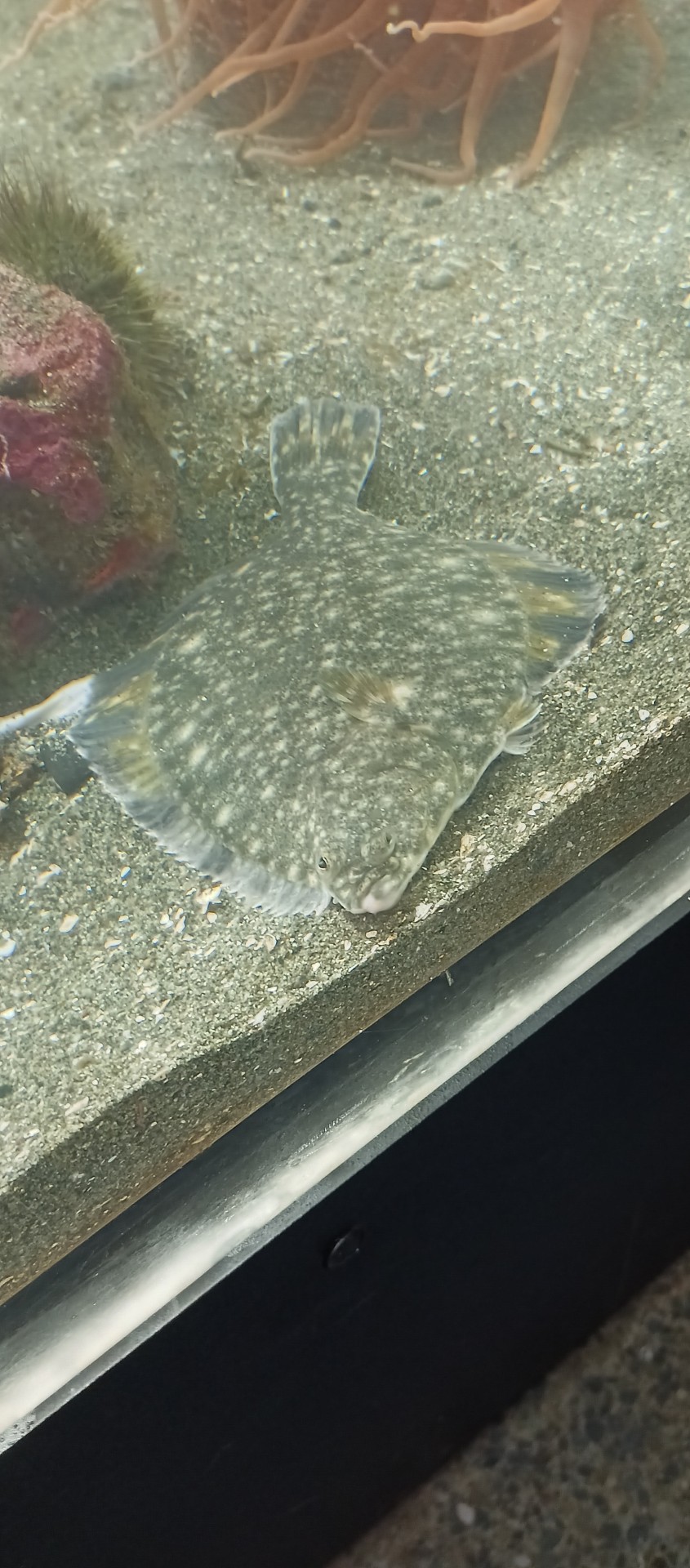
Starry flounder (Platichthys stellatus)
#starry flounder#eukarya#animalia#chordates#actinopterygii#pleuronectiformes#pleuronectidae#platichthys#platichthys stellatus#p. stellatus#flatfish#flounder
13 notes
·
View notes
Text

Amphistium
Amphistium — вимерлий рід променеперих риб ряду Камбалоподібні (Pleuronectiformes). Типовий вид — Amphistium paradoxum. Він вважається базальною формою камбалоподібних та перехідною формою від окунеподібних риб. На відміну від сучасних камбалових, у Amphistium очі не повністю зміщені на одну сторону голови, зокрема одне око розміщене на верхній частині голови.
Повний текст на сайті "Вимерлий світ":
https://extinctworld.in.ua/amphistium/
#amphistium#fish#pleuronectiformes#ua#actinopterygii#eocene#italy#verona#art#paleontology#paleoart#prehistoric#палеоарт#палеонтологія#ukraine#ukrainian#prehistory#science#illustration#daily#digital art#creatures#extinct#fossils#україна#мова#українська мова#український тамблер#арт#риби
8 notes
·
View notes
Text

European plaice By: Unknown photographer From: Le Grand Fichier du Monde Animal 1975
172 notes
·
View notes
Text
Australian Pokemon
Another set of fakemon from my Goorda region based on a mix of Australia and Aotearoa/New Zealand. Previous posts: single stages, non-natives, regional standards, creepy lines, regional variants, birds, early-game standards, misc 2, misc 1, starter variants, starters.
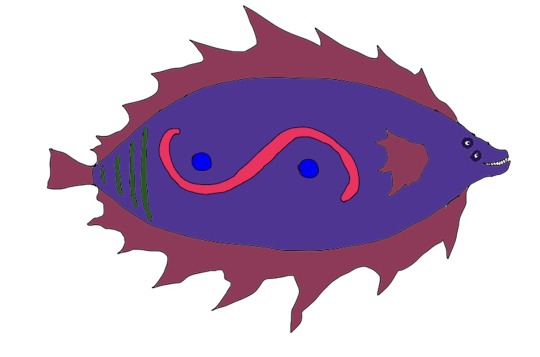
Plat, the Land Flounder Pokemon, poison-type. These fish Pokemon have adapted to life on land. They bury themselves under sand with only their eyes exposed. When something steps on the hidden Plat, it uses the razor-sharp edges of its fins to inject poison into the prey.
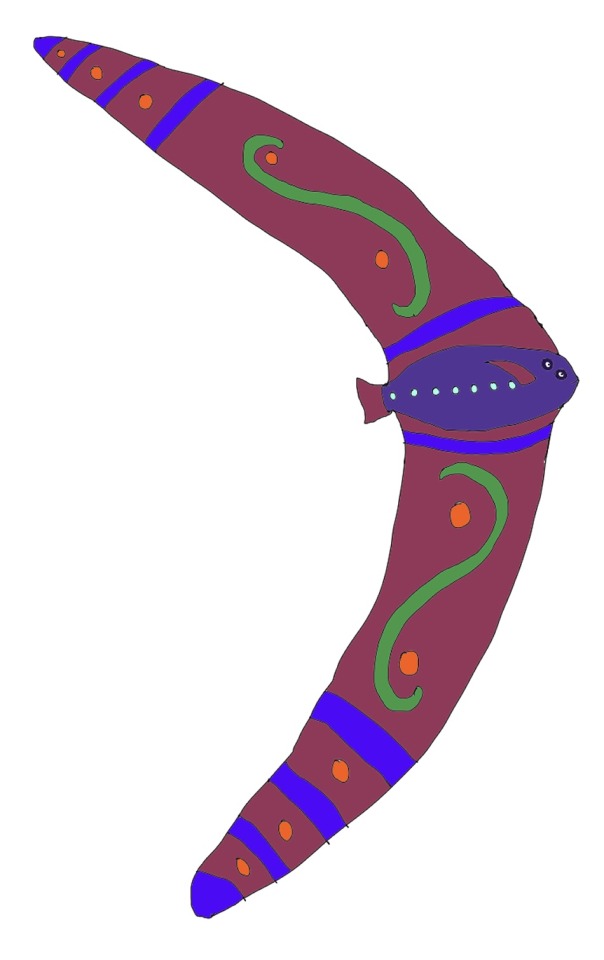
Plat evolves to Plumerang, the Sky Flounder Pokemon, flying/poison-type. Unlike the landlocked, ambush predator Plat, Plumerang has learned to fly through the sky by spinning its body in a strange, looping motion. They chase after flying prey, using their razor-sharp fins to poison them. When the poison causes the prey to fall out of the sky, Plumerang will descend on them. Humans in the past trained Plumerang to act as living weapons.
Plat and Plumerang are based on flounders. Plat is also based on the stonefish, an extremely venomous Australian fish that is easy to step on due to its camouflage. Plumerang is based on flying fish and boomerangs. Much like how Plumerang was used as a weapon, boomerangs were originally invented to act as weapons. Their name comes from "Pleuronectiformes" (the flounder family) plus "flat" and "boomerang".
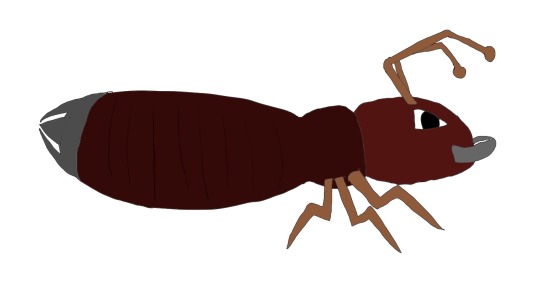
Tormite, the Termite Pokemon, bug-type. Tormite live and work in giant hives made from soil blued together with saliva. They mix together explosive chemicals in their abdomens. They can release these chemicals from their rear ends, spending them rocketing mandibles-first at enemies.
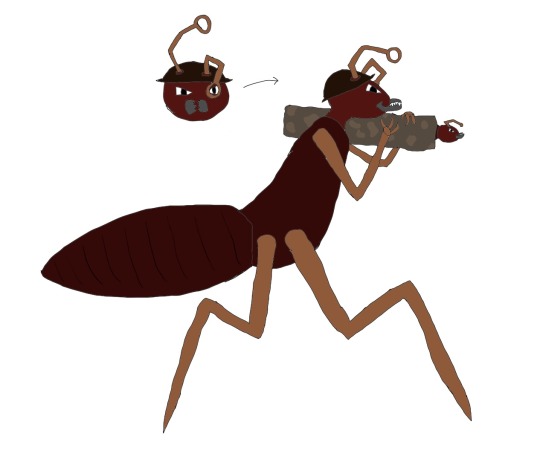
Tormite evolves to Myrpaga, the Army Ant Pokemon, bug-type. Myrpaga are the primary defenders of the hive. They create tubes out of dirt and plant material glued together with saliva. A Tormite sits in this tube, which is used to fire it at threats to the hive as a living missile. Myrpaga's antennae contain lenses that it uses to help aim.

Female Myrpaga evolves to Myrmartill, the Walking Hive Pokemon, bug-type, if said Myrpaga levels up when the trainer has 5 Tormite on their team. Rarely seen in the wild, Myrmartill only appear when the hive has to relocate. It carries the hive on its back and defends itself with twin turrets that fire barrages of Tormite at enemies. Nothing will get in the way of Myrmartill as it looks for a new place for the hive to live.
The Tormite line are based on ants and termites (which I genuinely thought were related to each other. Turns out they aren't) mixed with military technology. Chemical weapons are commonly used by ants and termites in defense of their hives. Tormite is a living rocket-propelled grenade and takes influence from the bombardier beetle. Myrpaga and Myrmartill are based on army ants. True army ants are native to South America, but a species with similar behavior is native to Australia. Myrpaga is a a soldier holding a rocket launcher while Myrmartill is a mix of armored troop transport and artillery cannon. Tormite comes from "termite", "torment", and "torpedo". Myrpaga comes from "myrmex" (Grrek for ant") and "RPG". Myrmartill comes from "myrmex" and "artillery".
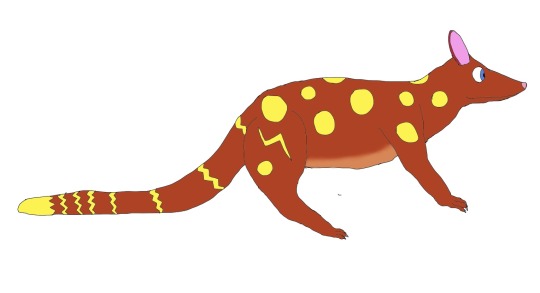
Sparquoll, the Sparking Pokemon, fire/electric-type. When Sparquoll runs, sparks are released from its feet that leave a trail of embers in its wake. It will climb trees to shock bird Pokemon out of the air, then finish them with a burst of flames.
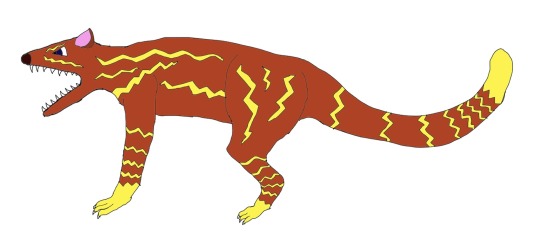
Sparquoll evolves to Sparkinina, the Sparking Pokemon, fire/electric type. Sparkinina has a unique organ that functions both as a flame sac and generator of electricity. This allows Sparkinina to produce both intense flames and powerful electric shocks. It chases down prey and immobilizes it with electric shocks, before dealing a fiery bite as a finishing blow.
Sparquoll and Sparkinina are based on quolls and Tasmanian devils, carnivorous marsupials that are related to each other. Spark can refer both to fire and electricity, so a fire/electric type seems like a fairly obvious combination. Their names come from "spark", "quoll", and "purinina" (the Palawa Kani language word for Tasmanian devils). Also, Sparkinia learns Twister as a shout-out to Loony Tunes.
I have some more fakemon in the works, so another post should come out within a few days
#pokemon#fakemon#australia#aotearoa#new zealand#original pokemon#flounder#boomerang#termite#ants#army ants#quoll#tasmanian devil#art#new artist#artists on tumblr#artblr#drawing#digital art
24 notes
·
View notes
Text
Endemic fauna from a new world-building project (Chortis: Territory of Magic)


Inspired by projects such as Tales of Kaimere and Hollow Earth (by j_stocky).
Minor inspiration from the Monster Hunter series
It involves some soft spec (this includes impossible stuff such as magic but that is for another day)
Taxa listed:
Keythongidae (family of flightless pterosaurs, only extant species is 𝘒𝘦𝘺𝘵𝘩𝘰𝘯𝘨 𝘬𝘦𝘺𝘵𝘩𝘰𝘯𝘨, the keythong)
Vormes (secondarily-terrestrial mosasaurs derived from Halisaurines, most are venomous) Top to bottom: 𝘈𝘳𝘦𝘯𝘢𝘷𝘺��𝘮𝘪𝘴 𝘨𝘪𝘨𝘢𝘥𝘦𝘬𝘵𝘦𝘴 (Horned sandwyrm), 𝘔𝘰𝘳𝘵𝘰𝘷𝘺𝘳𝘮𝘪𝘴 𝘤𝘩𝘰𝘳𝘪𝘴𝘵𝘰𝘨𝘯𝘢𝘵𝘩𝘶𝘴 (Olgoi-khorkoi)
Hydroherperia (clade of aquatic herperians, biarmosuchian-derived amniotes) 𝘗𝘴𝘦𝘶𝘥𝘰𝘭𝘢𝘨𝘪𝘢𝘤𝘳𝘶𝘴 𝘱𝘶𝘳𝘴𝘶𝘵𝘰𝘳 (Sea laggie)
Pseudodracones (clade of derived weigeltisaurian reptiles) 𝘛𝘳𝘪𝘵𝘰𝘯𝘢𝘱𝘦𝘪𝘭𝘪𝘴 𝘷𝘰𝘭𝘢𝘯𝘴 (Lesser andeda)
Antiquovivernes (clade of winged sharovipterygians) 𝘈𝘶𝘳𝘦𝘰𝘷𝘪𝘷𝘦𝘳𝘯𝘪𝘴 𝘷𝘶𝘭𝘨𝘢𝘳𝘪𝘴 (common antique wyvern)
Selenanodontia (clade of omnivorous or herbivorous aquatic stem-pangolins) 𝘏𝘺𝘥𝘳𝘰𝘤𝘢𝘮𝘦𝘭𝘪𝘹 𝘨𝘪𝘨𝘢𝘴 (Sea camel)
Cetodracones (secondarily-aquatic hexascelidans, accidentally wrote Cetodraconidae instead) 𝘙𝘶𝘣𝘳𝘰𝘤𝘦𝘵𝘰𝘥𝘳𝘢𝘤𝘰 𝘢𝘤𝘢𝘯𝘵𝘩𝘶𝘳𝘶𝘴 (Ruby dragonwhale)
Dyptosauria (ichthyosaur-convergent sauropodomorph dinosaurs related to 𝘌𝘰𝘳𝘢𝘱𝘵𝘰𝘳) Stenellasaura caerulea (Muotopara)
Actual ichthyosaurs are extinct on Chortis
Pseudophocoidea (superfamily of aquatic feliforms related to Herpestoidea)
Thalassotigris umbra (Northern sea panther)
Domplerichthyidae (family of omnivorous pelagic mola-like pleuronectiforms/flatfish)
Domplerichthys hadeli (Giant critterfish)
13 notes
·
View notes
Text
Daily fish fact #293
Flatfish!

Flatfish, also known as the order Pleuronectiformes, are born as normal-looking fish! However, as they mature, one of their eyes moves to either side of their body; in some species the eye moves to the right side and in some species the left! There's also species where either option is just as likely.
#fish#fishfact#fish facts#fishblr#marine animals#marine life#marine biology#sea creatures#sea life#sea animals#biology#zoology#flatfish
211 notes
·
View notes
Note
hi adalyn :] (? i hope i spelled that right) here's a fish

asking random questions because why not so what's your fav kind of drink? are u a coffee person? 🤔 oki love you byee 🫶
hi aspen ^_^ (you spelled it right btw)
thank you for the fish. idk what species it is (or if it's even meant to represent any actual species) but it's 1000% a flatfish/flounder of the order Pleuronectiformes.
answering your random question(s), I've never actually had coffee so idk if I'd like it or not, but is smells nice :]. I am a tea girlie tho (my favs are mint tea and chamomile tea). also love love love hot cocoa/chocolate milk. for non-warm drinks I also really really like lemonade 😌. oki byeee luv u 2 🫶
2 notes
·
View notes
Text
Animal Crossing Fish Dish Friday - #14
Brought to you by a marine biologist and a bunch of weird flat bois...
CLICK HERE FOR THE AC FISH EXPLAINED MASTERPOST!
Olive Flounder Meuniere

In ACNH: 1. Get Turkey Day Recipes - Franklin will give you this recipe after you've helped him cook all of Turkey Day's meals. Funny that on Turkey Day, the main ingredient is Sea Bass + a random fish from 3 choices (for Northern Hemisphere players) or Squid and Sea Urchin (for Southern Hemisphere). The recipe you get is for Olive Flounder. 2. Cook on the stove with 1 Olive Flounder and 2 Flour.
In Real Life: from France
Species of Choice: It can be any flounder species - the more native to you, the better. Flat fish come in many names and many species, as I'll explain below, but most of them available for people to eat present flaky, white meat that most people associate with a "good fish".
Other Ingredients:
Butter Parsley Lemon White or Corn Flour
Get the recipe. and serve with a hot veggie and bread.
This will be long because of pictures. A long, long time ago, in an article far away, we covered how flatfish, like the Olive Flounder, become to look so ridiculous. I also pointed out and explained the differences between left-eye and right-eye flounders in the article covering the Dab. These things will be important as we move on to our next lesson about flatfish.
With over 800 species, the Order of Pleuronectiformes, the flounders, has a lot of diversity. Even though most* of these fish are flat and have both eyes on one side of the head, they come in some interesting shapes. We'll start with the tame and end with the weirdos.
Flounders - SubOrder Plueronectoidei
The name "flounder" is used for many flatfish that are important to fisheries/seafood. Even still, these are also quite diverse, not just because both right-eyed and left-eyed flatfish are called flounders, but because they also occupy different niches. Some of them have tiny mouths great for eating tiny fish and plankton, and then some are higher-trophic-level predators with huge mouths and teeth!
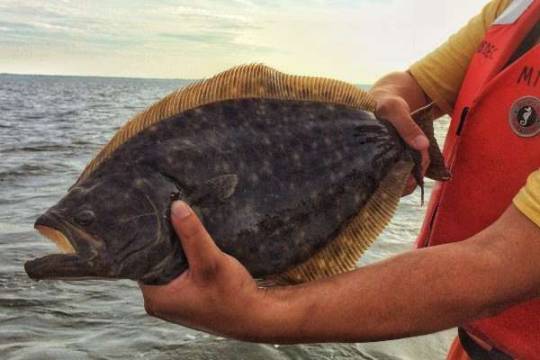

^These two fish are native to my neck of the ocean. Big differences in the mouth, right?
There are also 4 special flounders in this group called "Plaice".
Halibut - Genera Hippoglossus & Reinhardtius
The term halibut is reserved for the largest flatfish species, of which there are 3 - the Atlantic Halibut and Pacific Halibut in Genus Hippoglossus, and the Greenland Halibut in Genus Reinhardtius. They are absolutely massive, growing to 9 feet (3m) for some individuals. When you eat halibut, you're getting a very tiny portion of that fish. But size isn't the only way to tell them apart from other flatfish - they also have tail fins with longer, sharper points for fast swimming, and all 3 are "right-eyed" flatfish.

By Jlikes2Fish - Own work, Public Domain
Turbots - Family Scophthalmidae
Okay, now we're getting away from special flounders, and into new Families. The turbots are also called windowpanes or brill, but the biggest difference between them and other flatfish is their more rhombus or stout shape, rather than the elongated oval-shape of most other flatfish. Their shape is not really a scientific trait, but we're going for "first glance" here. These are also eaten widely.

By I, Luc Viatour, CC BY-SA 3.0
Soles - Family Soleidae & Achiridae
The fish in Soleidae are the true soles, with fish in Achiridae known as the American Soles, once classified within Soleidae. Either way, soles make up about 180 species and here's where we start to get weird. They often have more tear-drop-shaped bodies (but some can be really kind of square or round like a turbot) and very tiny or non-existent pectoral fins. These are also commonly eaten and they "right-eyed". They also have these weird mouths...just look at the picture...
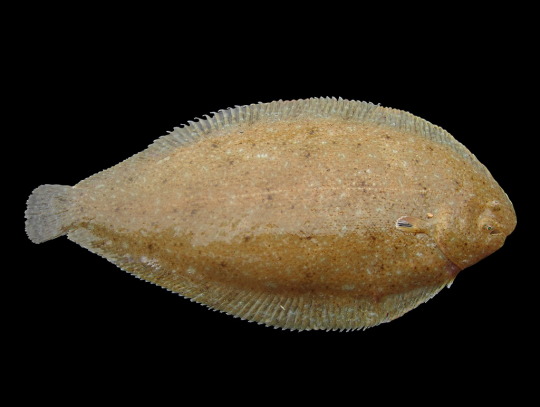
By © Hans Hillewaert, CC BY-SA 4.0
It's all, like, lip-less? And beak-shaped? They have jaws - of course - but whenever I've had to handle our tiny, native sole here on Long Island, I'm always a bit surprised at it. But yeah, that's a thing they have in common with the last group.
Tonguefish - Family Cynglossidae
Here we are - the last group and the weirdest of the bunch. I think these take the flatfish body plan to the extreme and they have a number of traits that set them apart from other flatfish. These guys also have that beak or hook-shape to the upper jaw, but it's flabby, so it's weird. It's like its body is slowly trying to turn the mouth with the eyes (who knows...maybe in millions of years, it will be!) These guys are "left-eyed" and have no pectoral fins at all. They're just...really weird.

It doesn't even look like a fish anymore. I hope ACPC makes one someday.
And there you have it - so many flat bois!
#animal crossing#animal crossing pocket camp#flounder#olive flounder meuniere#turbot#halibut#tonguefish#sole#flatfish#fish#cooking#marine biology#science in video games#maybe not as I went on a tangent#oh well#animal crossing fish explained
18 notes
·
View notes
Text
*about to ask my surgeon to put both my nipples back on one side* are you familiar with the order pleuronectiformes?
4 notes
·
View notes
Text


My flat friends felt like eating today! What a feast to behold!
#mast center aquarium#flatfish#eukarya#animalia#chordates#actinopterygii#pleuronectiformes#pleuronectidae#platichthys stellatus#starry flounder#pleuronichthys coenosus#c-o sole
5 notes
·
View notes
Text
Flat Fish
Flatfish: Masters of Disguise Comment Suggest edit Edit from here
Flatfish, also known as flatfishes or pleuronectiformes, are a fascinating group of fish that have adapted to life on the ocean floor. Their most striking feature is their flattened body, which allows them to lie camouflaged on the seabed. This unique adaptation has enabled them to thrive in a variety of marine environments, from shallow coastal waters to the deep sea.
Physical Adaptations
Flatfish undergo a remarkable transformation during their development. As larvae, they are symmetrical, with eyes on both sides of their head. However, as they grow, one of their eyes migrates to the opposite side of their body. This process, known as metamorphosis, results in a flat body with both eyes on the same side. The side with the eyes is called the ocular side, while the blind side is called the blind side.
The flattening of the body is accompanied by other adaptations that help flatfish blend in with their surroundings. Their skin is often pigmented to match the color and texture of the seabed, making them virtually invisible to predators and prey. Some species even have the ability to change color rapidly to adapt to different environments.
Habitat and Behavior
Flatfish are found in all of the world's oceans, from the Arctic to the Antarctic. They inhabit a variety of habitats, including sandy bottoms, mudflats, and rocky reefs. Some species are demersal, meaning they live on or near the bottom of the ocean, while others are pelagic, living in the open water.
Flatfish are typically solitary animals, although some species may form schools. They are carnivores and feed on a variety of prey, including small fish, crustaceans, and worms. Many flatfish use their flattened bodies to ambush their prey from hiding places in the sand or mud.
FOR MORE UPDATES CLICK : fishingproo.com/flat-fish/
0 notes
Text
The hogchoker
The hogchoker (Trinectes maculatus) is one of the few true flatfishes or pleuronectiforms, that are encountered in the aquarium trade. In North America, where the species is native, it is distributed from Massachusetts down to Panama, and hogchokers turn up in retailers tanks fairly regularly, as "freshwater flounders". Elsewhere they are a rare import.
In the USA, it is wild caught juvenile hogchokers, that are the most often traded as, a freshwater fish. This is unfortunate, because the adult flounders can be found far upstream, but juveniles are strictly estuarine in the wild, inhabiting only estuarine waters with a specific gravity of 1.00, during the summer months. Juvenile hogchokers do survive and grow in freshwater environments, but it is suboptimal for their growth rate, because it creates higher metabolic stresses for them. Ideally, juveniles should be maintained in mildly brackish aquaria only, and at a temperture of perhaps 22-26 degrees centigrade, based on the summer water tempertures, wild hogchokers would encounter in such habitats.
Adult hogchokers show no preferences of salinity at such tempertures, being fine at a specific gravity of 0 (freshwater) or of up to 1.02. Typically, the water tempertures experienced by wild hogchokers, may be as low as 2 degrees centigrade in wintertime, but as high as, around 24 degrees in the summertime. At a temperture of 15 degrees, hogchokers grow best at a specific gravity of 1.01 to 1.02. Whereas at 35 degrees, a temperture that wild hogchokers rarely encounter, except in the southern part of their distribution, they put on more weight in freshwater conditions.
The hogchoker grows only to 20 centimeters, or 8 inches, and prefers small prey in the wild, feeding on polychaetes, small arthropods, and tellinid clam siphons. Where they are available, polychaetes seem to be their primary prey resource, followed by amphipod crustaceans. Trinectes may need acclimatising to a captive diet, but this can be done, and they consume suitably sized meaty morsels.
The species is common on sandy bottoms, but is also rokerant of muddier or siltier bottoms in the wild. Such conditions should be replicated in the aquarium, if the hogchoker is to be maintained. They may be bothered or even I jured, by fishes that nip at the substrate, or are very active at the bottom of the water column. And as predators, hogchokers may themselves consume very small tankmates, intended as ornamental additions.
0 notes
Text
Sabías que el gallo común es un pescado blanco de agua salada y pleuronectiforme.

#menudeldia #dondesiemprecaridad #comidacasera #Madrid #distritoPacífico #conejoguisado #miercoles
0 notes